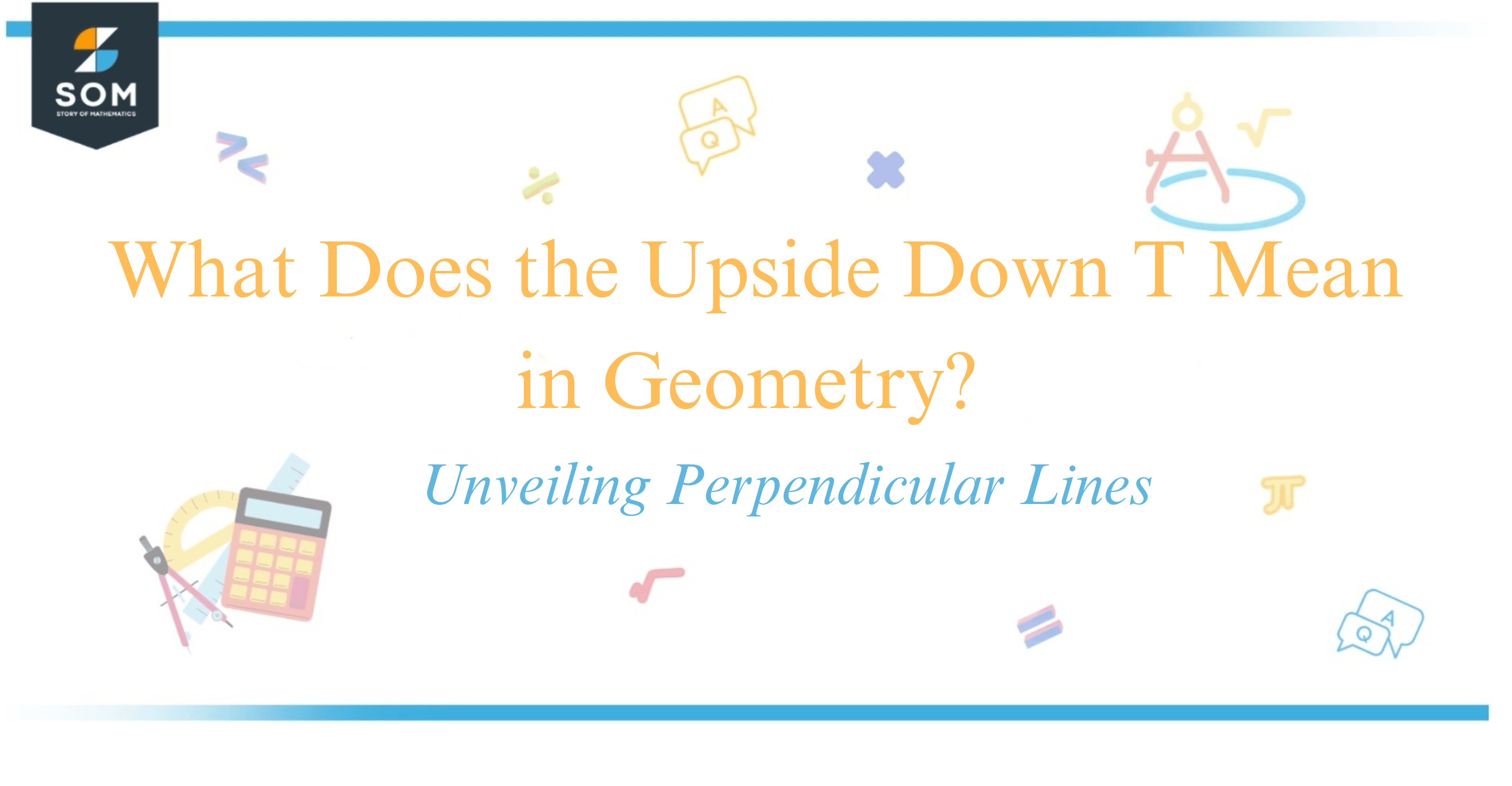
The upside-down T in geometry is a mathematical symbol known as the perpendicular sign, formally represented as $\perp$.
This symbol indicates that two lines or line segments intersect each other at a right angle, precisely at 90 degrees. Geometry is replete with various symbols that each carry specific meanings, and the upside-down T is one of the fundamental notations used to convey the unique relationship between perpendicular lines.
When I encounter this symbol in a geometric figure or equation, it immediately informs me that any lines it describes are related in such a way that they form right angles with each other, an essential concept in the study of shapes and space.

Understanding and recognizing the upside-down T is crucial, as it often comes into play when working with the theorems and properties that are foundational to geometry, such as the Pythagorean theorem.
Stick around as we explore more about this pivotal mathematical symbol and its implications in various geometric contexts.
Understanding the Upside Down T in Geometry
In geometry, lines play a crucial role in shaping various forms and structures, such as triangles, squares, and rectangles.
One important concept I often come across is that of perpendicular lines. These are lines that intersect at a right angle, which is precisely $[90^\circ]$. This concept is denoted by a special symbol—an upside-down T $(\perp)$, commonly referred to as the perpendicular symbol.
When I see this symbol in equations or diagrams, it tells me that the two lines it is referring to meet at $90^\circ$, forming an L shape.
Notably, a right angle is a fundamental component when constructing many geometric shapes and ensuring they have the properties we expect. For instance, the corners of a square or rectangle must all be right angles if the shape is to be classified correctly. In vector space, this concept is also applied to vectors that are perpendicular to each other.
The parallel lines are quite the opposite; they never cross and are always the same distance apart. Unlike perpendicular lines, parallel lines do not form right angles.
Here’s an example:
| Geometry Term | Symbol | Meaning |
|---|---|---|
| Perpendicular | $(\perp)$ | Lines intersecting at a right angle |
| Parallel | | | | Lines that never meet |
Whether I’m looking at a triangle or analyzing forces in physics, recognizing the upside-down T helps me understand the relationship between different lines.
It’s a gateway to exploring concepts such as congruence and symmetry within a shape, enhancing my comprehension of how physical structures and theoretical models are established.
Mathematical Context and Further Applications
In the realm of geometry and mathematics, an upside-down T, denoted as $\perp$, is crucial in discussing the orientation of lines.

Specifically, when I mention two lines as being $\perp$, I’m stating that they are perpendicular, intersecting at exactly a 90-degree angle. This precise angle is foundational in creating a coordinate system, where the x-axis and y-axis are perpendicular to one another, establishing the basis for both algebra and geometry.
In linear algebra, the concept of being perpendicular transcends simple lines and applies to vectors as well. Vectors that are perpendicular to each other are said to be orthogonal.
This ties into a broader concept known as orthogonal complements. In functional analysis, dealing with infinite-dimensional vector spaces, an orthogonal complement of a subspace is the set of vectors that are perpendicular to every vector in the subspace.
Vector calculus further utilizes the perpendicular concept in analyzing vector fields, where the perpendicularity of gradient vectors to level curves or surfaces is essential.
Let’s introduce some common symbols in geometry:
| Symbol | Represents | Example |
|---|---|---|
| $\cdot$ | Point | Point A ($A$) |
| $\overleftrightarrow{AB}$ | The line passing through points A and B | A straight line through points $A$ and $B$ |
| $\overline{AB}$ | The line segment between points A and B | Line segment with endpoints $A$ and $B$ |
| $\overrightarrow{AB}$ | Ray starting at point A and passing through B | Ray beginning at point $A$ and extending through point $B$ |
These geometric symbols and principles are not limited to the abstract; they are critical in countless applications, from architectural design to computer graphics, where the understanding of coordinates, points, and line segments informs the creation and manipulation of digital models and structures.
In essence, the upside-down T symbol is a gateway to exploring the dimensionality and spatial relationships foundational in advanced mathematics and its applications.
Conclusion
In the realm of geometry, the upside-down T symbol, designated ⊥, eloquently captures the essence of perpendicularity: it signifies two lines intersecting at a precise 90-degree angle.
This symbol is not simply a quaint mathematical ornament, but a fundamental notation that signifies an exacting condition—lines must be perfectly straight, and their meeting point, a right angle.
Envision it as a universal spatial language; when I see it ⊥, I immediately understand that it denotes two lines abiding by this strict orthogonal relationship.
Within equations or figures, ⊥ is indispensable for conveying concise geometric relationships. It’s a cornerstone of clarity in mathematical diagrams, enabling me to quickly comprehend that I’m dealing with lines that relate in this special, orthogonal way.
Furthermore, it transcends mere depiction, playing an integral role in geometric proofs, constructions, and theorems that hinge on perpendicular lines.
So whenever I come across the ⊥ symbol, I’m reminded that geometry is a domain of precision and exactitude, and symbols like these are the alphabets that I use to read and write this exacting language of shapes and spaces.
